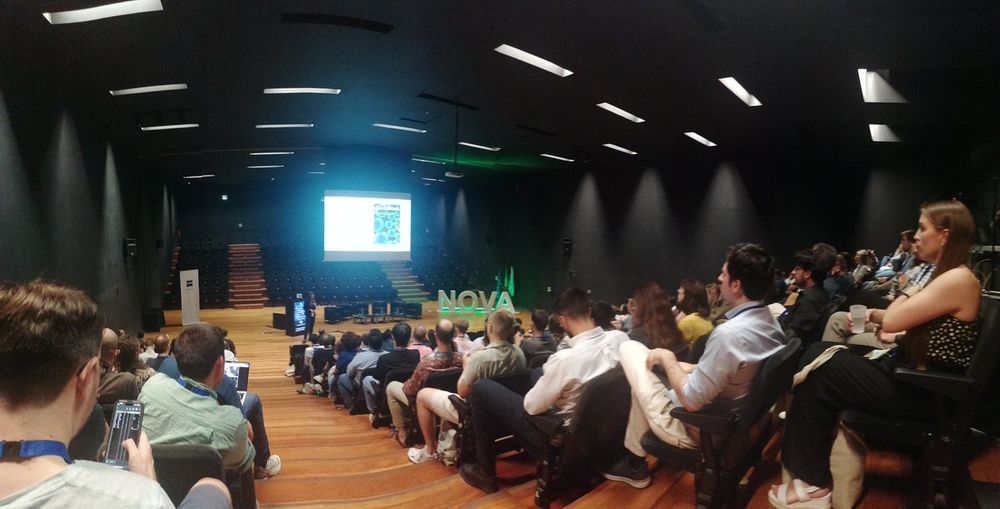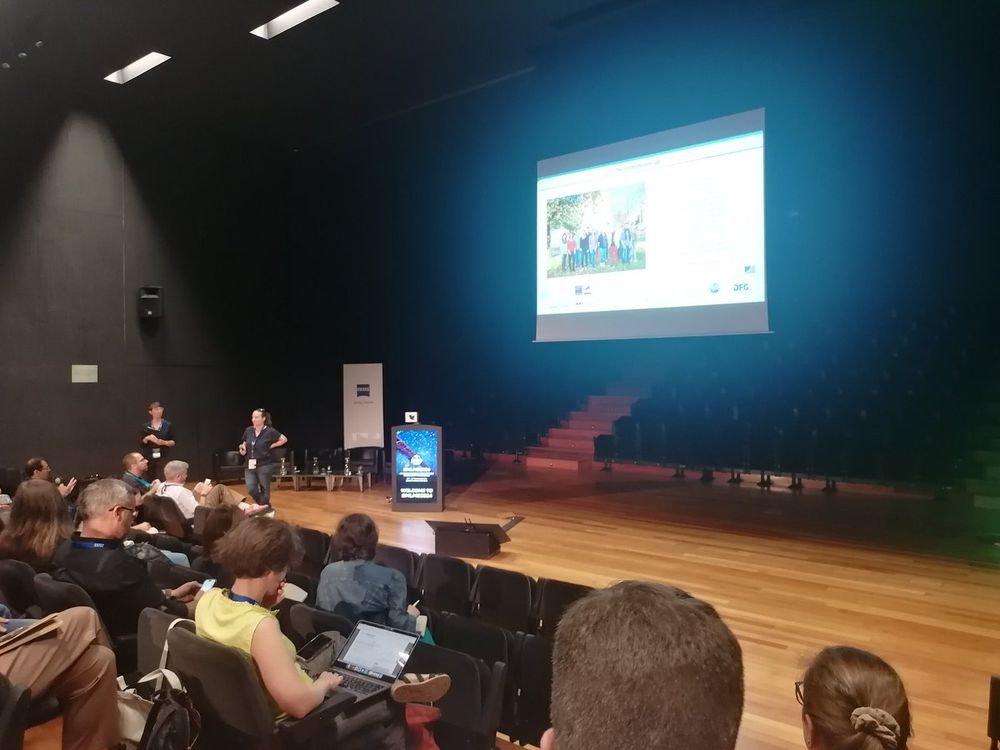
Our team (Pixel) and along with it our institute (IBS, Grenoble) is now officially a node of the IMAGINE consortium (for next generation imaging for biology across scales)
www.linkedin.com/posts/imagin...
@drfluo.bsky.social
#CNRS #researcher (PhD/HDR) working on : #FluorescentProteins 🧬; #MolecularBiology 👨🔬; #SMLM 🔬; #Crystallography 💎; #Biochemistry 🧪..

Our team (Pixel) and along with it our institute (IBS, Grenoble) is now officially a node of the IMAGINE consortium (for next generation imaging for biology across scales)
www.linkedin.com/posts/imagin...
16+ years ago, and I keep of him a memory blending esteem, respect, and friendship. A true scientist, both highly skilled and humble, and a remarkable person.
29.08.2025 13:27 — 👍 0 🔁 0 💬 0 📌 0
Saddened to learn of the passing of Prof. Michel Robert-Nicoud, Emeritus, and one of my former university teachers, with whom we often discussed what he called F-techniques: all the fluorescence-based techniques used to measure intracellular metrics. He accepted being the chairman of my PhD defense
29.08.2025 13:27 — 👍 2 🔁 0 💬 1 📌 0
New paper about the slow maturation of the fluorescent protein mEos4b and how to improve it (onlinelibrary.wiley.com/doi/10.1002/...)
17.07.2025 07:41 — 👍 7 🔁 1 💬 0 📌 0Wonderful work led by @ncaramel.bsky.social
01.06.2025 15:39 — 👍 1 🔁 0 💬 0 📌 0
New paper about a python software to process spectra within protein crystals (journals.iucr.org/j/issues/202...)
01.06.2025 11:58 — 👍 4 🔁 2 💬 1 📌 0With a UV light ;)
18.04.2025 17:40 — 👍 1 🔁 0 💬 0 📌 0
Sometimes I forget why I always loved so much studying FPs, and sometimes I remember!
18.04.2025 09:37 — 👍 8 🔁 1 💬 1 📌 0
Sine and I, 20 years ago at the ESRF
07.01.2025 09:46 — 👍 0 🔁 0 💬 0 📌 0But for me she was above all the one who trusted me when I presented my PhD project about fluorescent proteins at the synchrotron some 20 years ago and who accepted the role of PhD mentor, always kind and available. A great human and scientific loss.
06.01.2025 19:41 — 👍 2 🔁 0 💬 0 📌 0
Deeply saddened by the announcement of Prof Sine Larsen's passing. Former scientific director of the European Synchrotron Radiation Facility and president of the International Union of Crystallography, Sine had been Emeritus at the University of Copenhagen for several years.
06.01.2025 19:41 — 👍 4 🔁 0 💬 2 📌 0
Impressive!
youtube.com/watch?v=Pl44Jj…

A last thank you to everyone for this great #SMLMS2024 event that was the opportunity to hear, meet or recontact with great people and discover beautiful places.
02.09.2024 09:57 — 👍 0 🔁 0 💬 0 📌 0Incredible discovery of a suicide (repetitive and toxic) protein expressed from normally non-coding RNA in phage-infected bacteria.
x.com/ElliotHershber… science.org/doi/10.1126/sc…


Impressive and colorful work by @christlet presented at the #SMLMS2024 about axonal organization with incredible STORM/Platinum replica EM correlations
30.08.2024 12:17 — 👍 0 🔁 0 💬 0 📌 0
A very good question asked by @l_masu at #SMLMS2024. The answer is the super duper resolution (© @rita_strack) allowed by RESI.
30.08.2024 11:48 — 👍 0 🔁 0 💬 0 📌 0
Interesting talk about cell phototoxicity metrics with "PhotoFiTT" by @_mariod at the #SMLMS2024, which makes you want to try it
30.08.2024 11:19 — 👍 0 🔁 0 💬 0 📌 0
Great great talk by @Melike_Lak about super-resolution for biology at #SMLMS2024. Chromatin compaction and dynamics metrics & chromatin remodelling depending on the stiffness of the cells environment and visualized/measured thanks to SR... fascinating!
30.08.2024 08:53 — 👍 0 🔁 0 💬 0 📌 0


Ok, I'm impressed #SMLMS2024
29.08.2024 19:52 — 👍 0 🔁 0 💬 0 📌 0
More than full auditorium for the amazing talk of @rita_strack at the #SMLMS2024. That really great gives hints to know whether or not (and how) daring submitting to Nature Methods :
29.08.2024 15:02 — 👍 0 🔁 0 💬 0 📌 0
For those interested in X-rays and neutrons for chemistry, physics and biology, the #HERCULES2025 European school will be held in Grenoble, France in March/April 2025. Deadline October 2024.
29.08.2024 11:35 — 👍 0 🔁 0 💬 0 📌 0
SPAD-array detector for MINFLUX. Very interesting discoveries (and keywords) for a not-so-much optics guy like me, by @EliSlenders at the #SMLMS2024
29.08.2024 11:26 — 👍 0 🔁 0 💬 0 📌 0
Focal adhesion complexes and DNA-PAINT... great work by @RomanTsukanov at #SMLMS2024
29.08.2024 10:09 — 👍 0 🔁 0 💬 0 📌 0
Thrilled to come back at the #SMLMS2024 after a long pause. Last time for me was in 2015. What an evolution since the first I went to 12 years ago! We could then all fit in a classroom and have a personal talk by Prof W.E. Moerner (before his Nobel Prize). Congratulations and…
29.08.2024 09:51 — 👍 0 🔁 0 💬 0 📌 0
Great talk about peptidoglycan dynamics in Staph by @PinhoLab at thee #SMLMS2024 yesterday!
29.08.2024 09:19 — 👍 0 🔁 0 💬 0 📌 0
Beautiful presentation (as usual) about bacteria by @UEndesfelder in a talk chaired by @rita_strack at the #SMLMS2024 yesterday!
29.08.2024 09:18 — 👍 0 🔁 0 💬 0 📌 0
SMLMS methods and techniques are important but fluorophores development also. Thanks for all the nice chats and contacts at the poster session of the #SMLMS2024 yesterday. Would you be interested in smart fluorescent proteins' engineering, here I am ;
29.08.2024 09:17 — 👍 0 🔁 0 💬 0 📌 0
Such a nice presentation at the #SMLMS2024 Lisbon by @JonasRies! Super resolution microscopy for structural biology, obviously ring many bells for me. Hope that our latest FPs in test for #minflux will work and lead to collaboration.
29.08.2024 08:51 — 👍 0 🔁 0 💬 0 📌 0
Beautiful presentation (as usual) about bacteria by @UEndesfelder in a talk chaired by @rita_strack at the @SMLM_Symposium yesterday!
29.08.2024 08:29 — 👍 0 🔁 0 💬 0 📌 0
Great talk about peptidoglycan dynamics in Staph by @PinhoLab at thee @SMLM_Symposium yesterday!
29.08.2024 08:20 — 👍 0 🔁 0 💬 0 📌 0